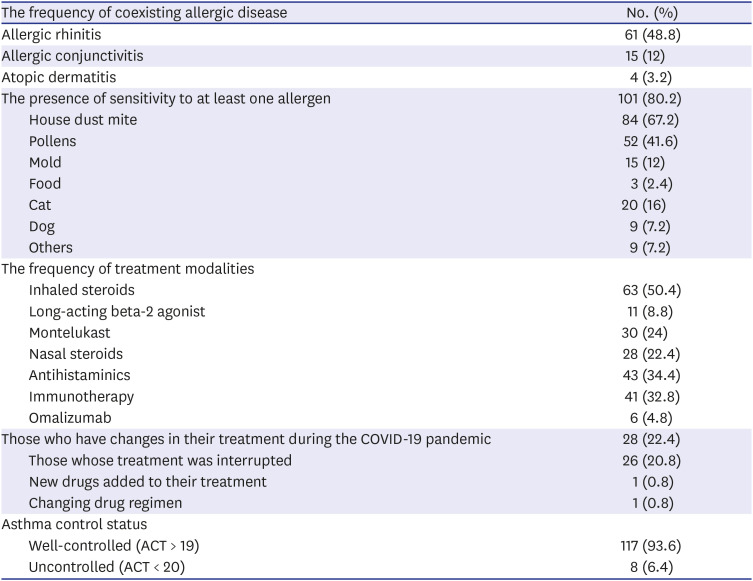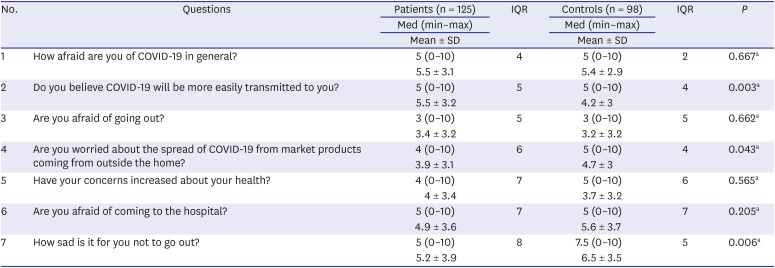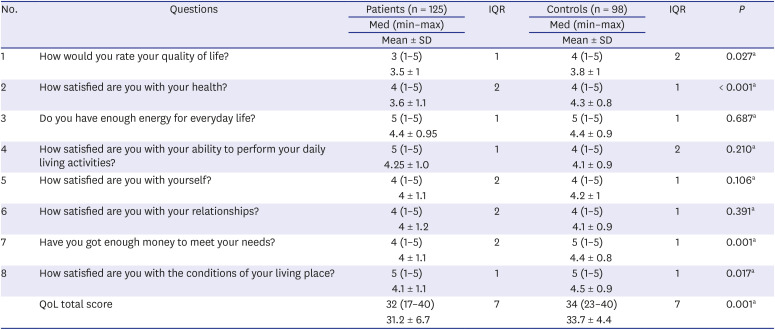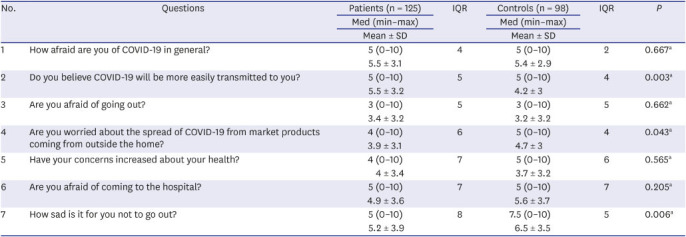1. Harapan H, Itoh N, Yufika A, Winardi W, Keam S, Te H, et al. Coronavirus disease 2019 (COVID-19): a literature review. J Infect Public Health. 2020; 13(5):667–673. PMID:
32340833.

2. World Health Organization. WHO coronavirus (COVID-19) dashboard. Updated 2021. Accessed April 4, 2021.
https://covid19.who.int
.
3. Sohrabi C, Alsafi Z, O’Neill N, Khan M, Kerwan A, Al-Jabir A, et al. World Health Organization declares global emergency: a review of the 2019 novel coronavirus (COVID-19). Int J Surg. 2020; 76:71–76. PMID:
32112977.

5. World Health Organization. WHO coronavirus (COVID-19) dashboard. Situation by region, country, territory & area. Updated 2021. Accessed April 6, 2021.
https://covid19.who.int/table
.
6. Docherty AB, Harrison EM, Green CA, Hardwick HE, Pius R, Norman L, et al. Features of 20 133 UK patients in hospital with covid-19 using the ISARIC WHO clinical characterisation protocol: prospective observational cohort study. BMJ. 2020; 369:m1985. PMID:
32444460.

7. Onder G, Rezza G, Brusaferro S. Case-fatality rate and characteristics of patients dying in relation to COVID-19 in Italy. JAMA. 2020; 323(18):1775–1776. PMID:
32203977.

8. Castro-Rodriguez JA, Forno E. Asthma and COVID-19 in children: a systematic review and call for data. Pediatr Pulmonol. 2020; 55(9):2412–2418. PMID:
32558360.
10. Corne JM, Marshall C, Smith S, Schreiber J, Sanderson G, Holgate ST, et al. Frequency, severity, and duration of rhinovirus infections in asthmatic and non-asthmatic individuals: a longitudinal cohort study. Lancet. 2002; 359(9309):831–834. PMID:
11897281.

11. Chatziparasidis G, Kantar A. COVID-19 in children with asthma. Lung. 2021; 199(1):7–12. PMID:
33496842.

12. Beken B, Ozturk GK, Aygun FD, Aydogmus C, Akar HH. Asthma and allergic diseases are not risk factors for hospitalization in children with coronavirus disease 2019. Ann Allergy Asthma Immunol. 2021; 126(5):569–575. PMID:
33493639.

13. Timberlake DT, Narayanan D, Ogbogu PU, Raveendran R, Porter K, Scherzer R, et al. Severity of COVID-19 in hospitalized patients with and without atopic disease. World Allergy Organ J. 2021; 14(2):100508. PMID:
33520082.

14. Moeller A, Thanikkel L, Duijts L, Gaillard EA, Garcia-Marcos L, Kantar A, et al. COVID-19 in children with underlying chronic respiratory diseases: survey results from 174 centres. ERJ Open Res. 2020; 6(4):00409–02020. PMID:
33263054.

15. Matsuyama S, Kawase M, Nao N, Shirato K, Ujike M, Kamitani W, et al. The inhaled steroid ciclesonide blocks SARS-CoV-2 RNA replication by targeting the viral replication-transcription complex in cultured cells. J Virol. 2020; 95(1):e01648–e01620. PMID:
33055254.

16. Yamaya M, Nishimura H, Deng X, Sugawara M, Watanabe O, Nomura K, et al. Inhibitory effects of glycopyrronium, formoterol, and budesonide on coronavirus HCoV-229E replication and cytokine production by primary cultures of human nasal and tracheal epithelial cells. Respir Investig. 2020; 58(3):155–168.

17. National Asthma Education and Prevention Program, Third Expert Panel on the Diagnosis and Management of Asthma.
Expert Panel Report 3: Guidelines for the Diagnosis and Management of Asthma
. Bethesda, MD, USA: National Heart, Lung, and Blood Institute;2007.
18. International Rhinitis Management Working Group. International consensus report on diagnosis and management of rhinitis. . Allergy. 1994; 49(19 Suppl):1–34.
19. Bousquet J, Anto JM, Bachert C, Baiardini I, Bosnic-Anticevich S, Walter Canonica G, et al. Allergic rhinitis. Nat Rev Dis Primers. 2020; 6(1):95. PMID:
33273461.

20. Weidinger S, Beck LA, Bieber T, Kabashima K, Irvine AD. Atopic dermatitis. Nat Rev Dis Primers. 2018; 4(1):1. PMID:
29930242.

21. Chao JY, Derespina KR, Herold BC, Goldman DL, Aldrich M, Weingarten J, et al. Clinical characteristics and outcomes of hospitalized and critically ill children and adolescents with coronavirus disease 2019 at a tertiary care medical center in New York City. J Pediatr. 2020; 223:14–19.e2. PMID:
32407719.

22. Zhang JJ, Dong X, Cao YY, Yuan YD, Yang YB, Yan YQ, et al. Clinical characteristics of 140 patients infected with SARS-CoV-2 in Wuhan, China. Allergy. 2020; 75(7):1730–1741. PMID:
32077115.

23. Schmidt S, Mühlan H, Power M. The EUROHIS-QOL 8-item index: psychometric results of a cross-cultural field study. Eur J Public Health. 2006; 16(4):420–428. PMID:
16141303.

24. Liu C, Jiang ZC, Shao CX, Zhang HG, Yue HM, Chen ZH, et al. Preliminary study of the relationship between novel coronavirus pneumonia and liver function damage: a multicenter study. Zhonghua Gan Zang Bing Za Zhi. 2020; 28(2):107–111. PMID:
32077660.
25. Zhang JJ, Cao YY, Dong X, Wang BC, Liao MY, Lin J, et al. Distinct characteristics of COVID-19 patients with initial rRT-PCR-positive and rRT-PCR-negative results for SARS-CoV-2. Allergy. 2020; 75(7):1809–1812. PMID:
32281110.

26. Li X, Xu S, Yu M, Wang K, Tao Y, Zhou Y, et al. Risk factors for severity and mortality in adult COVID-19 inpatients in Wuhan. J Allergy Clin Immunol. 2020; 146(1):110–118. PMID:
32294485.

27. Garg S, Kim L, Whitaker M, O’Halloran A, Cummings C, Holstein R, et al. Hospitalization rates and characteristics of patients hospitalized with laboratory-confirmed coronavirus disease 2019 - COVID-NET, 14 States, March 1-30, 2020. MMWR Morb Mortal Wkly Rep. 2020; 69(15):458–464. PMID:
32298251.

28. Halpin DM, Faner R, Sibila O, Badia JR, Agusti A. Do chronic respiratory diseases or their treatment affect the risk of SARS-CoV-2 infection? Lancet Respir Med. 2020; 8(5):436–438. PMID:
32251625.

29. Prompetchara E, Ketloy C, Palaga T. Immune responses in COVID-19 and potential vaccines: Lessons learned from SARS and MERS epidemic. Asian Pac J Allergy Immunol. 2020; 38(1):1–9. PMID:
32105090.

30. Williamson EJ, Walker AJ, Bhaskaran K, Bacon S, Bates C, Morton CE, et al. Factors associated with COVID-19-related death using OpenSAFELY. Nature. 2020; 584(7821):430–436. PMID:
32640463.

31. Peters MC, Sajuthi S, Deford P, Christenson S, Rios CL, Montgomery MT, et al. COVID-19-related genes in sputum cells in asthma. relationship to demographic features and corticosteroids. Am J Respir Crit Care Med. 2020; 202(1):83–90. PMID:
32348692.

32. Jackson DJ, Busse WW, Bacharier LB, Kattan M, O’Connor GT, Wood RA, et al. Association of respiratory allergy, asthma, and expression of the SARS-CoV-2 receptor ACE2. J Allergy Clin Immunol. 2020; 146(1):203–206.e3. PMID:
32333915.

33. Wark PA, Pathinayake PS, Kaiko G, Nichol K, Ali A, Chen L, et al. ACE2 expression is elevated in airway epithelial cells from older and male healthy individuals but reduced in asthma. Respirology. 2021; 26(5):442–451. PMID:
33455043.
34. Sajuthi SP, DeFord P, Li Y, Jackson ND, Montgomery MT, Everman JL, et al. Type 2 and interferon inflammation regulate SARS-CoV-2 entry factor expression in the airway epithelium. Nat Commun. 2020; 11(1):5139. PMID:
33046696.

35. Brooks SK, Webster RK, Smith LE, Woodland L, Wessely S, Greenberg N, et al. The psychological impact of quarantine and how to reduce it: rapid review of the evidence. Lancet. 2020; 395(10227):912–920. PMID:
32112714.

36. Jiao WY, Wang LN, Liu J, Fang SF, Jiao FY, Pettoello-Mantovani M, et al. Behavioral and emotional disorders in children during the COVID-19 epidemic. J Pediatr. 2020; 221:264–266.e1. PMID:
32248989.

37. Sprang G, Silman M. Posttraumatic stress disorder in parents and youth after health-related disasters. Disaster Med Public Health Prep. 2013; 7(1):105–110. PMID:
24618142.

38. Deolmi M, Pisani F. Psychological and psychiatric impact of COVID-19 pandemic among children and adolescents. Acta Biomed. 2020; 91(4):e2020149. PMID:
33525229.
39. de Figueiredo CS, Sandre PC, Portugal LC, Mázala-de-Oliveira T, da Silva Chagas L, Raony Í, et al. COVID-19 pandemic impact on children and adolescents’ mental health: Biological, environmental, and social factors. Prog Neuropsychopharmacol Biol Psychiatry. 2021; 106:110171. PMID:
33186638.

40. Gavriatopoulou M, Korompoki E, Fotiou D, Ntanasis-Stathopoulos I, Psaltopoulou T, Kastritis E, et al. Organ-specific manifestations of COVID-19 infection. Clin Exp Med. 2020; 20(4):493–506. PMID:
32720223.

41. Altiparmak S, Altiparmak O, Sari HY. Asthma and quality of life in adolescents in Manisa, Turkey. Int J Adolesc Med Health. 2011; 23(3):217–221. PMID:
22191187.

42. Boran P, Tokuç G, Pişgin B, Oktem S. Assessment of quality of life in asthmatic Turkish children. Turk J Pediatr. 2008; 50(1):18–22. PMID:
18365586.
43. Hepkaya E, Kilinc AA, Cebi MN, Koyuncu Z, Cokugras H. General health status of children with asthma during the COVID-19 pandemic. Pediatr Int. 2021; 63(3):331–337. PMID:
32881185.

44. Mindell JA, Williamson AA. Benefits of a bedtime routine in young children: sleep, development, and beyond. Sleep Med Rev. 2018; 40:93–108. PMID:
29195725.

45. Cellini N, Di Giorgio E, Mioni G, Di Riso D. Sleep and psychological difficulties in Italian school-age children during COVID-19 lockdown. J Pediatr Psychol. 2021; 46(2):153–167. PMID:
33517438.

46. Hawke LD, Monga S, Korczak D, Hayes E, Relihan J, Darnay K, et al. Impacts of the COVID-19 pandemic on youth mental health among youth with physical health challenges. Early Interv Psychiatry. 2021; 15(5):1146–1153. PMID:
33047495.
47. Saraçlar Y, Kuyucu S, Tuncer A, Sekerel B, Saçkesen C, Kocabaş C. Prevalence of asthmatic phenotypes and bronchial hyperresponsiveness in Turkish schoolchildren: an International Study of Asthma and Allergies in Childhood (ISAAC) phase 2 study. Ann Allergy Asthma Immunol. 2003; 91(5):477–484. PMID:
14692432.

48. Boechat JL, Wandalsen GF, Kuschnir FC, Delgado L. COVID-19 and pediatric asthma: clinical and management challenges. Int J Environ Res Public Health. 2021; 18(3):1093. PMID:
33530624.

49. Kulhas Celik I, Metbulut AP, Uneri OS, Senses Dinc G, Dibek Misirlioglu E. Effect of patient and parental anxiety on adherence to subcutaneous allergen immunotherapy during the coronavirus disease 2019 pandemic. Ann Allergy Asthma Immunol. 2021; 126(5):595–597. PMID:
33493638.









 PDF
PDF Citation
Citation Print
Print




 XML Download
XML Download